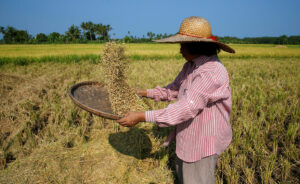New NFA palay buying prices not expected to push retail prices higher

By Adrian H. Halili, Reporter
THE National Food Authority’s (NFA) new buying prices for palay or unmilled rice are not expected to push retail rice prices higher, with traders already paying much more at farmgate, analysts said.
“I don’t see that happening (retail price increases) since NFA buying will be limited to buffer stock requirements,” Raul Q. Montemayor, national manager of the Federation of Free Farmers said in a Viber message.
“NFA’s main objective is to accumulate buffer stocks. Traders are already buying palay at relatively high prices, so propping up palay prices does not have to be NFA’s concern at this time,” he said.
The NFA Council last week hiked the buying price range for dry and clean palay to P23 to P30 per kilogram (kg) and to P17 to P23 per kg for fresh palay. Prices vary by grade and location.
The Department of Agriculture said that the increase was designed to offer farmers a more competitive price as the old NFA buying prices had diverged significantly from what private traders were paying.
Traders were reportedly buying dry palay from farmers for between P28 to P30 per kg.
Last year, the NFA set the purchase price for dry and wet palay at P19-P23 and P16-P19 per kg, respectively.
Monetary Board member V. Bruce J. Tolentino said that the NFA’s uniform buying scheme may not be suitable for every part of the country.
“A fundamental weakness of NFA is that… its buying price is exactly the same all over the country, regardless of local demand and supply conditions,” Mr. Tolentino said in a Viber message.
NFA OIC Administrator Larry Lacson has said that the NFA will set prices on a per province basis, with the new guidelines to be drafted this week.
The NFA Council had also approved a P10-billion modernization plan to increase its capacity to process and store rice.
He added that after modernization, the NFA’s drying capacity will increase to 180,000 metric tons.
“What we need is at least 495,000 metric tons of drying capacity,” Mr. Lacson said.




